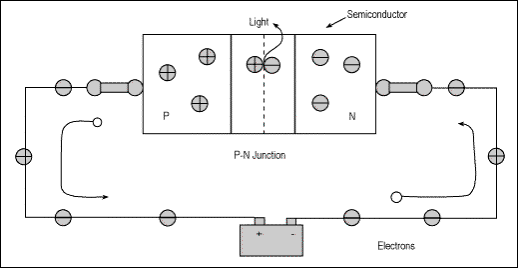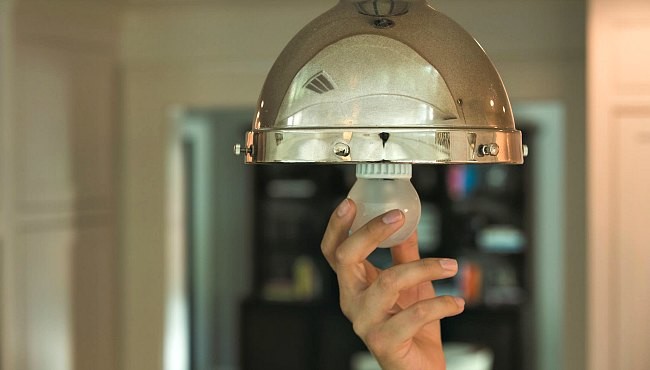Shedding Light On LED Lights: Leaders In Cost & Performance
Originally published on GreenLivingIdeas.
In this era about driving attention to energy efficiency, few, if any, are going to argue a case against the benefits of using LED lights.
But replacing burnt-out incandescent bulbs with LEDs is no simple undertaking, especially when it comes to price. LED bulbs, built using emitting diodes, although certain to last longer than the Edison-style incandescent bulbs and demand less electricity, are not what you expect to find in the nearest neighborhood bargain basement store.
Another incandescent replacement is the compact fluorescent light, or CFL, which contains mercury, a toxic chemical. Aside from how best to dispose of toxic bulbs when they burn out (recycling these seems to be a myth), the biggest knock on CFLs involves the overall, less attractive light they provide when compared to the old-fashioned incandescents.
The Transition To LEDs
While LEDs today are far less expensive now than they used to be, they still cost considerably more than a 4-pack of the old incandescents, which are being discontinued. To this point, Holly Johnson adds, “And while prices for LED light bulbs were astronomical when we first covered this topic just a few years ago — upwards of $100 for one bulb — you can now pick up a cheap, 60-watt-equivalent LED light bulb for less than $5.”
While Johnson’s staggering price of $100 may seem unreal to some readers, a $50 tab per bulb was not uncommon that long ago. Today, the average is below $10 a bulb, even though certain LED brands cost more.
How LEDs Work
LEDs have traditionally been used in small electronic displays. According to the Lighting Research Center, LEDs are semiconductor diodes, electronic devices that permit current to flow in only one direction. The diode is formed by bringing two slightly different materials together to form a PN junction (Figure below). In a PN junction, the P side contains excess positive charge (“holes,” indicating the absence of electrons) while the N side contains excess negative charge (electrons).
Put another way, LED light bulbs bring together currents with a positive and negative charge to create energy released in the form of light. The result is a fast source of light that is reliable, instantaneous, and able to be dimmed. (CFLs cannot be dimmed.)

LED Lifespan Makes The Difference
Ultimately, what puts LEDs above incandescent bulbs and CFLs is how long they can last. According to Consumer Reports, LED light bulbs can last anywhere from 20,000 to 50,000 hours (up to 5 1/2 years), or up to five times longer than any comparable bulb on the market. Just don’t break them or expose them to water.
Buying Energy Star Certified LED Lights
Here’s the lowdown on what ENERGY STAR certification means: Strict energy efficiency guidelines set by the US Environmental Protection Agency (EPA). Lighting products that have earned the ENERGY STAR label deliver exceptional features, while using less energy. Saving energy helps you save money on utility bills and protects the environment by reducing greenhouse gas emissions.
According to Energy Star, these certified bulbs
- Use about 70-90% less energy than traditional incandescent bulbs
- Last 10 to 25 times longer
- Save $30 to $80 in electricity costs over each bulb’s lifetime
- Meet strict quality and efficiency standards that are tested by accredited labs and certified by a third party
- Produce about 70-90% less heat, so it’s safer to operate
- Can cut energy costs associated with home cooling
These factors stack a pretty impressive reasons for using LEDs.
Top Global Manufacturers Of LEDs

The Photonics Industry and Technology Development Association (PIDA) compiled a list of the top 10 global LED lighting manufacturers, according to Economic Daily News. According to Source Guide, there are presently 965 LED manufacturers world The top three are Philips, Osram, and Panasonic.
- Philips
- Osram
- Panasonic
- Toshiba
- Cree
- ENDO
- Zumtobel
- Koizumi
- Iris Ohyama
- Sharp
LED Pricing
Consumer Reports has written this on LED pricing: “When LEDs were $50 a bulb not long ago it took years to earn back the money you spent on an LED. But now you’ll find LEDs for $10 and less.”
When you start price shopping, keep in mind how many different types of LEDs that are available for purchase. You guessed it: PLENTY!
LED Buying Basics
Your LED light bulb search should be based on what light best provides the amount of light you need. You should also weigh in the color of light you like. Then there are other basics to consider, such as price and the dimensions of the bulb and base.
Using a color temperature spectrum, lights can be all colors. However, the shades of white can range from warm to cool white. The lower the color temperature, the more yellow your white light will appear. This type of light is referred to as soft white. Distinctions like these about user preference will usually do plenty to drive the sale of the LED product, price aside.
According to the Top Ten Reviews site on 2015 LEDs, you will find a comprehensive list about the best LED manufacturers, and their product specifications
Warranty & Support: “A good LED light bulb should come with at least a three- to five-year warranty, while the best LED bulbs have up to a 10-year warranty,” states TopTenReviews, who published the Top 10 list below.
The Top 10
Cree 9.5 Watt $9.97
Philips LED 425264 $60.00
G7 Power Incline $19.95
Feit 13.5-watt $22.50
EcoSmart GP19 $14.97
TCP LED 40W $19.99
Sylvania 73014 $9.81
GE 89888 $3.24
Philips 433227 10.5-watt Slim Style $3.00
Lighting Ever 10W 100018 $6.99
Notice first the significantly large difference in pricing on these lights, from $3 to $60. Read all of the print and make certain you are satisfied with what you’re buying.
In the end, LED lighting is an environmentally friendly option that will save you money in the long run. Regardless of what you choose, LED lighting solutions will shine long after incandescent and CFL bulbs have quit working. And you are contributing to green living!
Images: Current LED technologies in one picture via Shutterstock hand on bulb via Cree via Facebook, LED candles via Phillips
Have a tip for CleanTechnica? Want to advertise? Want to suggest a guest for our CleanTech Talk podcast? Contact us here.
Latest CleanTechnica.TV Video

CleanTechnica uses affiliate links. See our policy here.


